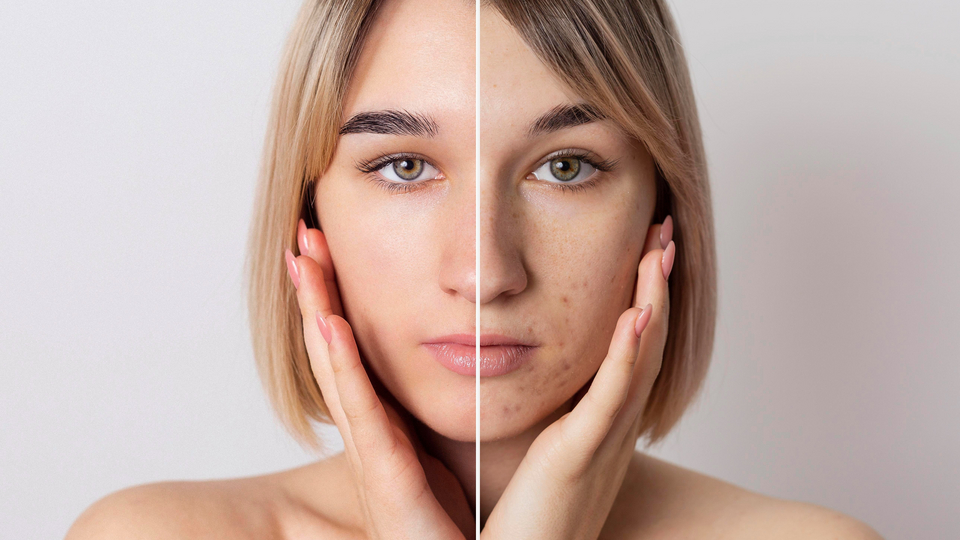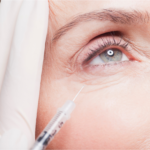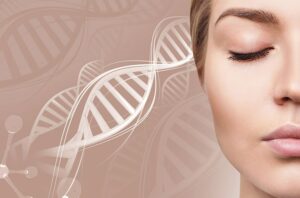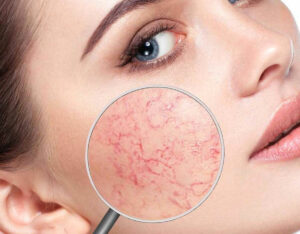Microneedling for acne scars
The cosmetic procedure of microneedling is carried out in order to get rid of acne and post-acne scars on the skin. The technology of its implementation is similar to the technique of applying tattoos.
What is microneedling?
Microneedling is a mechanical procedure that uses a microneedle pen and 12 sterile microneedles. The needles are simply “injected” into the skin, causing small punctures and surface irritation. The pain is very mild, as the needles pierce only the superficial layers of the skin. Facial microneedling is a way to remind the skin to restart its collagen and elastin production, which then results in a new layer of skin that is firmer and smoother than before.
Microneedling solves the following skin problems
- Dark Spot Removal
- Scars on the surface
- Small wrinkles
- Crow’s feet and acne scars
- Brightens the face and gives healthy look
- Facial skin becomes firmer and smoother, giving it a more youthful appearance
- The skin of the face becomes elastic and smooth.
Benefits of microneedling
- Safe for all skin types and skin tones
- Very short recovery time
- It’s a chemical-free process
- Increases the absorbency of the skin
- It can be applied to any part of the body
- Solves all face problems within 3-6 months
- Has no side effects
- It uses the body’s natural healing abilities.
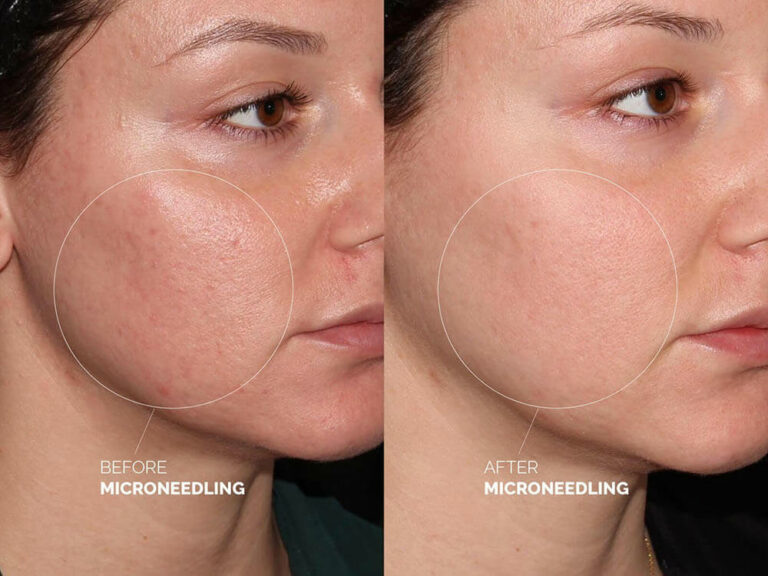
How post-acne scars appear
Acne scars are the result of acne, and their severity depends on the type of acne a person has. These scars may or may not be permanent, and there are several ways to treat scars. Given the fact that comedones are the most common skin condition, scarring from them is also quite common, with about one in five people with acne also developing scars.
Before we dig into the topic of acne scars, let’s first look at the cause of this aesthetic condition.
What is acne?
Acne is a skin condition in which the pores of the skin can become clogged with various substances such as bacteria, dead skin, or sebum, causing the pores to develop into what is commonly referred to as pimples. While it may seem common and fairly simple, acne is diagnosed when the pore infection recurs and affects specific areas of the skin.
This skin disorder is the most common, especially in teenagers and young adults, with nearly 95% of people between the ages of 11 and 30 having acne at some point. Usually, acne can come and go over several years, and most patients’ symptoms begin to improve with age. However, there are people who can develop acne in adulthood, and some of them still struggle with this disease even after their 30s (although this is rare at such a late age – about 3%).
Who gets acne?
The most common (and evidence-based) risk factors for acne are hormonal changes typical of adolescence and pregnancy, birth control pills or corticosteroid medications (which also affect hormone levels), or having a parent who has had acne. Usually, eating chocolate is also considered a risk factor, but this has no scientific confirmation. However, a diet high in sugar and carbohydrates has been linked to the development of acne.
Given that the main cause of acne breakouts is fat accumulation, which is directly affected by hormonal changes, the good news is that people usually get acne during puberty. As soon as they reach adulthood and the hormonal background stabilizes, the symptoms disappear. However, for some people, breakouts do not decrease with age, which can greatly affect their skin as well as their bodybuilding and self-esteem.
Post-acne is a pronounced skin defect that appears as a result of chronic inflammation (acne). This is a common dermatological problem, the cause of which is an unskilled (mechanical) effect on the rash (squeezing acne). As a result, post-inflammatory hyperpigmentation and scars appear on the face, shoulders, back, or chest (less often on the hips and buttocks), which is a pronounced aesthetic disadvantage.
There are quite a lot of ways to deal with post-acne today: pharmaceutical cosmetics and preparations, mechanical effects (peelings, laser resurfacing, photothermolysis, microneedling, ozone therapy, and scar subcision), injection procedures (PRP, mesotherapy), volumizing techniques (collagen therapy, dermal fillers) and others.
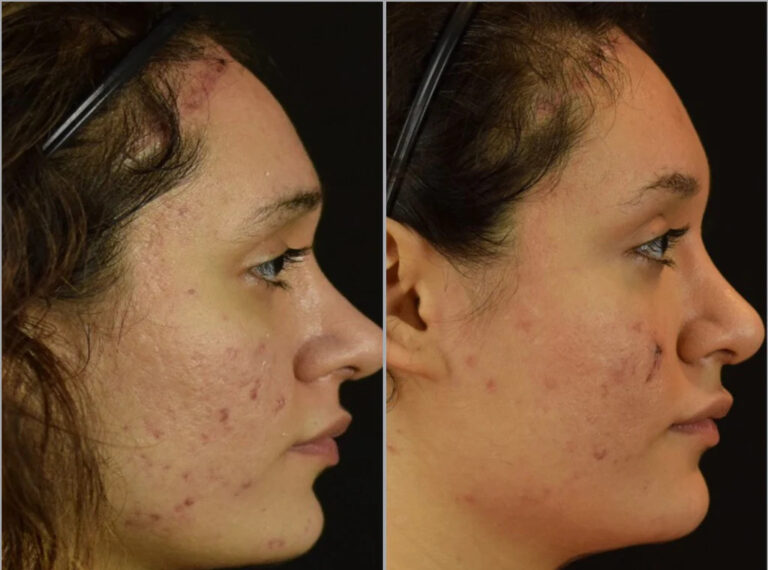
Microneedling for acne scars
Microneedling is one of the effective methods in the treatment of post-acne. The course of procedures will speed up tissue regeneration and reduce the severity of atrophic scars and spots.
This procedure also has other names: non-injection fractional mesotherapy, collagen induction therapy, and needle dermabrasion. The method is based on subcutaneous collagen induction, which occurs after skin microtrauma. The skin is pierced with the great frequency with the finest needles to a depth of 0.2 to 3 mm. In addition, before the procedure, special meso-cocktails are applied to the skin, the penetration of which into the subcutaneous layers is enhanced due to microperforation.
Microneedling was developed by Dr. Andre Camirand approximately 20 years ago, who in 1997 proved that the use of an empty tattoo gun helps to improve the appearance of surgical scars. A little later, the most effective puncture depth (1-2.5 mm) for stimulating the synthesis of elastin fibers was introduced to the market.
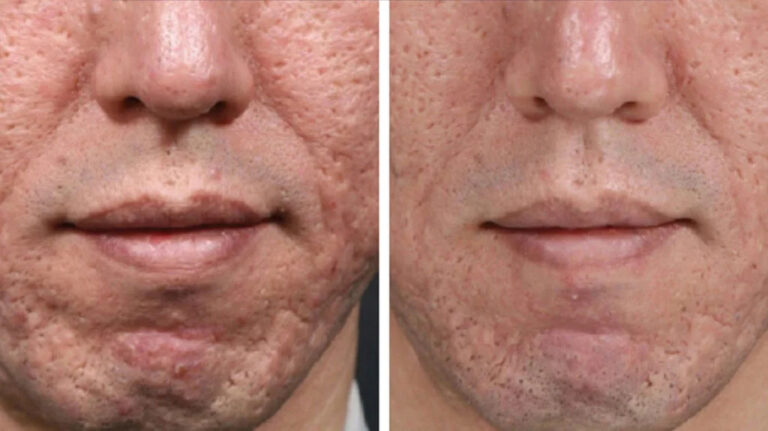
How does microneedling help with post-acne?
The course of procedures (the number of sessions depends on the severity of the skin defect) will be effective in fighting post-acne scars of rectangular and navicular types. Microneedling in the fight against post-acne receives good reviews from patients and is gaining more and more popularity in cosmetology and dermatology.
How is microneedling for acne scars being performed?
The selected area of skin is cleaned with a non-alcoholic disinfectant solution. A replaceable sterile cartridge is put on the dermapen (a device for fractional microneedling), and the entire surface is sequentially processed by the device at an angle of 90° to the skin. The maximum efficiency in the correction of post-acne scars is achieved with a needle length of 0.75-2.5 mm. The optimal puncture density for maximum collagen synthesis is 200 punctures per cm².
The advantage of microneedling is that the recovery period after the session is very short – only a few hours. Pain during fractional mesotherapy is very slight (the degree depends on the depth of the needles) – in the vast majority of cases, anesthetics are not required.
Contraindications
- It is impossible to injure moles, as this can lead to the development of melanomas, and malignant skin neoplasms.
- Folliculitis and other infectious processes on the skin, as the operation of the device will cause the spread of infection
- Skin diseases. Herpes
- Poor blood circulation
- Diabetes
- Allergy to drug ingredients
- Oncological diseases.
The final stage of Microneedling
After Microneedling
Skin care after Microneedling
After the treatment of the skin with needles, the patient’s face becomes crimson red. After all, its entire surface is covered with microtraumas.
To soothe the skin, the specialist conducts a quick course of LED therapy. As a result, the skin acquires a pink tint. After that, the patient can go home.
During the next few days after the procedure, some tightness of the skin of the face may be felt. Scars and acne do not disappear after the first visit to the practitioner.
To get rid of them, as already mentioned, you need to go through at least three procedures. But already after the first therapy, the skin becomes fresh and radiant.
After the microneedling procedure, you cannot use decorative cosmetics, skincare, and cleansing products for a day. Products with a heavy aggressive formula can be used no earlier than 3-4 days later
During the first week, you should also refrain from prolonged exposure to the sun. Of course, during the course, it is impossible to carry out other cosmetic procedures, including peeling and laser therapy. In addition, experts do not recommend visiting a bath or sauna after the procedure. Hot baths should also be avoided.

